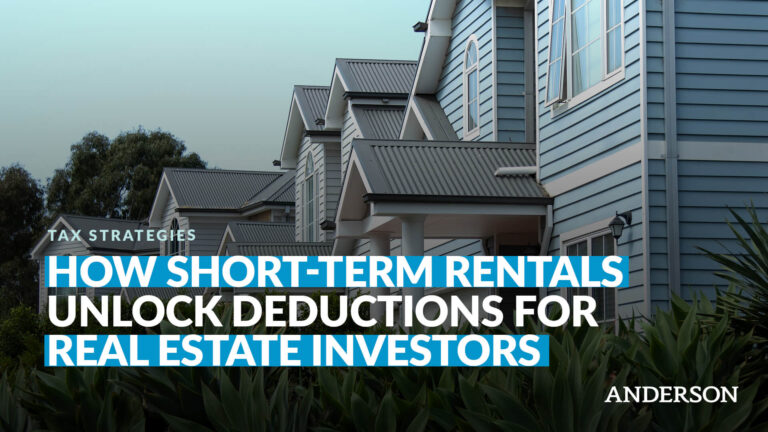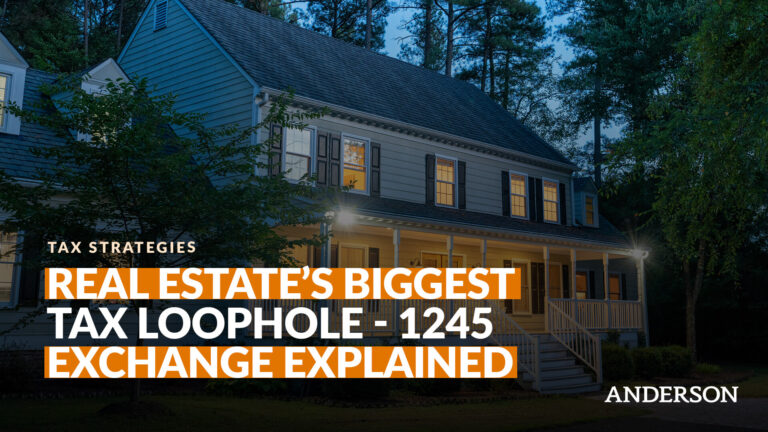A 1031 exchange, also referred to as a like kind exchange, is the swap of one investment property for another in order to defer capital gains taxes until a later date.
1031 Exchange Rules
- Like-Kind Rules
- Qualification Rules
- Depreciable Property Rules
- Greater or Equal Value Rules
- Delayed Exchanges and Timing Rules
- Vacation Home Rules
What Are Capital Gains Taxes?
Generally speaking, when an investor sells an asset, they must pay capital gains taxes. Long term capital gains taxes are applied to an asset that has been held for more than a year before liquidation. Short term capital gains taxes are applied to an asset that has been held for less than a year.
Capital assets, as they are called, include investments you typically expect, such as real estate, stocks, and business ownership—but they can also include jewelry, collectibles, and vehicles. Basically, anything that produces a realized gain when sold can trigger capital gains taxes.
There are some assets that will not trigger capital gains taxation. This includes business inventory and intellectual property, such as a copyright, artistic composition, patents, designs, and secret formulas. These are often referred to as non-capital assets, and do not trigger a capital gains tax when sold.
If the sale of an asset generates a loss, then it will not be subject to capital gains taxes. But if the sale of an asset generates a realized gain, then Uncle Sam wants a slice of the profit pie. It’s important to note that realized gain means that the asset has been sold, and that unrealized gain—such as the increased value of an untouched retirement account—is not taxable.
Have more questions about capital gains taxes? Join our Tax Tuesday Webinar and get the answers straight from our tax experts!
Capital Gains Tax Rates
Short term capital gains taxes range from 10 percent to 37 percent, depending on the tax bracket you fall into. In most cases, this tax rate will be the same as that applied to your ordinary income unless the realized capital gains push your net income into a higher tax bracket. Long term capital gains taxes are much more appealing, capping out at 20 percent.
Tax Cuts and Jobs Act Capital Gains Rates
After the Tax Cuts and Jobs Act, long term gains earned by taxpayers making less than $40k ($80k for married couples filing jointly) were no longer subject to a capital gains tax. A taxpayer earning more than $40k, but less $441,450 for individuals ($496,600 for married couples filing jointly) would see their capital gains subject to a 15 percent tax rate. Anyone with an annual income more than that, no matter how much more, would not be taxed more than 20 percent.
At the time of this article, there has been much discussion about increasing the capital gains tax rate, so much so that some individuals would see the rate nearly double. If you think this only concerns investors, think again—capital gains taxes also apply to individuals or couples selling their personal residence.
Wouldn’t it be nice if there were a way to legally avoid capital gains taxes? As it turns out, there are a few accounting tactics you can use to lower your capital gains tax liability—a 1031 exchange being one of the most popular strategies for real estate investors.
What is a 1031 Exchange?
A 1031 exchange helps real estate investors avoid capital gains taxes by allowing the seller of the capital asset to roll their profits into their next investment.
Unfortunately, 1031 exchanges are only available to real estate investors. Investors selling other assets will need to explore alternate options for lowering capital gains taxes. That’s because the Tax Cuts and Jobs Act narrowed the 1031 exchange to real estate investments only. The good news is that the full expensing allowance created by the TCJA may provide assistance to other investment types in terms of lowering the tax burden.
A 1031 exchange can be a real boon to real estate investors, specifically, because it allows them to roll the profits from one piece of real estate into their next venture, thereby avoiding capital gains taxes.
How Does a 1031 Exchange Work?
Remember that a 1031 exchange relates to one real estate investor selling a property and rolling the proceeds into the purchase of another property. It does not have to involve two parties physically swapping properties.
It’s not very common for an old property to be exchanged for a replacement property simultaneously. Though if that is the case, the exchange process needs to be handled by an exchange facilitator, such as an escrow attorney or title lawyer.
Typically, the exchange process involves each investor selling property so that the exchange transaction can be recorded for tax purposes. In other words, there needs to be a paper trail—a handshake and informal swap agreement is not good enough in terms of liability or legality, and it won’t qualify for a section 1031 exchange either.
Additionally, the exchange process doesn’t even have to be an exchange involving two parties. It just has to involve one real estate investor exchanging their relinquished property for a new investment property.
1031 Exchange Rules
Now that we’ve covered what a 1031 exchange is and how it typically works, let’s talk about some of the rules for performing one:
Like Kind Rules
In order for an investor to roll their capital gains into their next investment without paying capital gains taxes, the two investments must be of “like kind,” according to the IRS. You might think that means meeting very specific criteria related to considerations like location, value, and usage. Thankfully, the IRS definition of like kind is surprisingly broad—as long as the two properties are within the United States, and both are held or to be held with the intention of earning income or as an investment, it’s apples to apples, as they say.
Speaking of apples—that means, for instance, if you own an apple orchard, you can sell it and roll your profits into a shopping center at a different location. Even though the two types of real estate are very different, as far as the IRS is concerned, they qualify for a 1031 exchange.
Qualification Rules
As previously mentioned, both the property you are selling and the property you are acquiring must be within the United States and held with the intention of producing income or serving as an investment.
As you might guess, this rules out using a 1031 exchange to change your own personal residence. If, however, the place in which you reside is actually owned by a corporation (say, one that you created to own and manage rental properties), there may be something to discuss. You will have to parse that out with a competent tax attorney or tax advisor to see if using a 1031 exchange is feasible.
Otherwise, as long as your investment property meets the criteria, you can benefit from a deferred exchange provided by section 1031. If your rental property or commercial property is generating a net loss, you can still leverage a tax deferred exchange. A 1031 exchange has nothing to do with the income produced by the building, and everything to do with its value. In fact, a 1031 exchange might be a great exit strategy for a real estate investor to use if a property is not working out.
Depreciable Property Rules
Depreciation recapture allows the IRS to collect taxes on capital gains from the sale of a depreciating asset that an investor had previously used to lower their tax burden. Though depreciation recapture is capped at 25 percent of the capital gain, that can still add up to a sizeable amount. Thankfully, a 1031 exchange can help certain real estate investors avoid depreciation recapture.
Unfortunately, there are some exceptions to this rule. For instance, if an investor is selling improved land with a building in exchange for unimproved land without a building, they will be hit with depreciation recapture. This seems reasonable, of course, given that depreciation only relates to improvements that depreciate over time.
Tangentially, at the time of this article, real estate investors can depreciate property by taking 3.636 percent of its cost basis every year over the course of 27.5 years. Just remember that when the time comes to sell the building, depreciation recapture will wipe away some of those tax savings—unless you use a tax deferred exchange.
Greater or Equal Value Rules
In order to benefit from a 1031 exchange, the property you exchange for must be of equal or greater value than the property you are selling. Any extra cash is known as a boot, and will be taxed at the capital gains tax rate.
For example, if you sell the aforementioned apple orchard for $1 million and purchase a strip mall for $500k, you’d be walking out of that deal with an extra $500kin cash in sale proceeds—not rolling it into your next investment. As such, it would be taxed at the capital gains rate.
However, you could sell your million-dollar apple orchard and purchase two similarly priced shopping centers for $500keach. That’s because the 1031 exchange allows you exchange one property for multiple properties (and multiple properties for one property). The rules get a little complex however if multiple properties are involved, which is why it is highly recommended investors work with a tax professional skilled in real estate taxes.
Another consideration is the debt associated with each property. In certain situations, a loan consideration can still trigger taxes. For example, if you had a $1 million mortgage on your apple orchard, and the mortgage on the new portfolio of commercial real estate properties totaled $700k, then you are actually walking into the exchange with a taxable gain of $300,000. Just as it is with cash, debt-related gains are also referred to as boot, and that boot is taxable.
Improvement Exchanges
If a real estate investor cannot find a potential replacement property that suits their needs, they can do what is called an improvement exchange. This potential property must pass a so-called “napkin test,” which essentially ensures that the new building will be of greater or equal value to the old property.
The improvement exchange can also be used to bring the value of the new property up to or beyond the value of the old property. For example, let’s say a property owner has a $2 million strip mall with two restaurant pads. They want to purchase a $1.5 million strip mall in a better location with no restaurant pads, but that would (1) not facilitate the tax deferral afforded by the 1031 and (2) not meet their needs, because it’s really the restaurants that generate the most foot traffic and make the other retail pads viable. Let’s say this property owner decides to finance another $1 million to add two state-of-the art restaurant pads he can use to attract a franchise. Now, the new potential property is valued at $2.5 million, and the 1031 exchange will work.
Delayed Exchanges and Timing Rules
The majority of 1031 exchanges fall into the category of a delayed exchange. This is because most exchanges are not truly a swap between two parties. The delayed exchange (also known as a Starker exchange) is a three-party exchange. This third party will need to be a qualified middleman, such as an escrow attorney, who can hold the cash made from selling the property until the investor is ready to buy a replacement property. This middleman needs to hold the cash because if you receive it right away, you will lose the opportunity to execute a 1031 exchange.
You will also need to indicate (in writing) a replacement property within 45 days. The IRS will let you designate multiple potential properties. That way, even if you only close on one of them, you will have covered your bases.
However, you only have 180 days from the sale of your original property to close and gain title of the replacement property. The 45-day period and the 180-day period begin at the same time. This means, for instance, if you wait until day 45 to notify the middleman in writing of your desired property or properties, you will only have 135 days to close on that property.
That doesn’t seem like a serious consideration—after all, 135 days is a little more than four months. However, it’s important to remember that purchasing a property typically involves financing, inspections, and negotiations over a variety of factors. This means these time frames are actually tighter than you might think, and the main reason why so many investors involved in commercial real estate investing utilize tools like bridge loans and swing loans, which provide funding much more quickly than a conventional mortgage.
Incidentally, a 1031 exchange can be performed by purchasing the new property first and then selling the old property. This is called a reverse exchange, and as you might guess, it will also need the services of a qualified exchange accommodation titleholder.
Vacation Home Rules
A 1031 exchange is for investment properties only. That means you cannot sell a vacation home and purchase a like-kind vacation home to enjoy periodically—or to move into for retirement.
Prior to 2004, many soon-to-be retirees would use the 1031 exchange to move into a new residence. However, recent legislation has closed many of the loopholes that afforded these opportunities.
It is still possible to turn a vacation home into a potential exchange. All you need to do is rent it out for at least six months of the year, effectively making the vacation home a rental property. As such, it falls into the category of qualifying real property for the purpose of affecting a 1031 exchange—meaning it is property held with the intention of generating income. Offering the property for rent, but not successfully placing a tenant in the property, does not qualify the vacation home for a 1031 exchange.
Can you move into a replacement property after a 1031 exchange?
The rules regarding vacation homes and 1031 exchanges might have you wondering if you can somehow move into the replacement property. Provided you can find a way to turn the personal residence of a vacation home into an income producing asset, it may qualify for a like-kind exchange.
The Safe Harbor Rule, created by the IRS in 2008, allows you to turn a 1031 exchange replacement into a personal residence as long as you rent the unit out for at least 14 days during a 12-month period, and as long as you yourself do not occupy the premises for more than 14 days (or more than 10 percent of the time you rent it out) during the same said 12-month period.
A 1031 Exchange Can Help Real Estate Investors Lower Capital Gains Tax Liabilities
A 1031 exchange is just one of the many tax strategies used by real estate investors to lower their capital gains tax liability. And while there are quite a few rules and regulations to keep in mind as you navigate the exchange process, a qualified tax planner with experience in real estate taxes can help you create a plan to maximize the potential tax savings.
Anderson Advisor’s tax professionals are uniquely trained to handle a wide range of real estate tax issues, including 1031 exchanges. If you have a growing portfolio of real estate investments, we encourage you to schedule a free tax planning strategy session today! The sooner you create a tax plan, the sooner you can reduce your tax liability—leaving you with more money to invest in your real estate pursuits.
Receive a detailed risk assessment to assist in lowering problem areas that could wipe out all of your assets with one wrong move. Speak with an Anderson Professional Advisor to get your FREE Strategy Session. Limited-Time offer: FREE (a $750 value.)
















